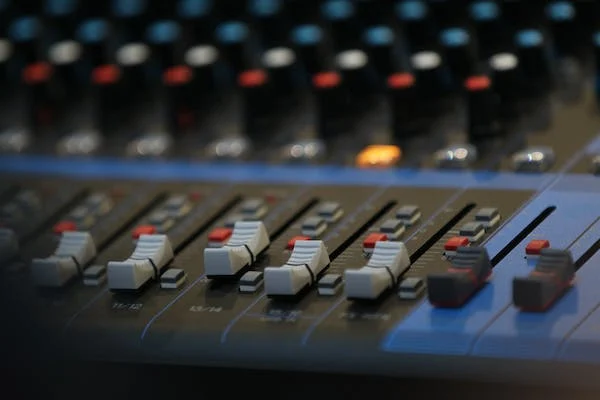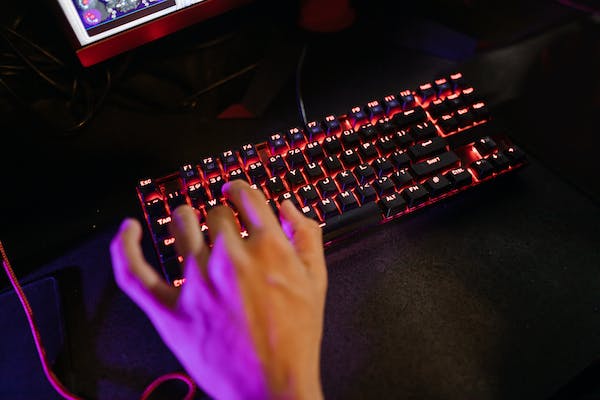Mechanical keyboards are one of the most famous PC peripherals in recent times. They are precise and fast in games, very durable, and give the equipment a certain gaming aesthetic, but do you know how they work? In this article, we are going to tell you how a mechanical keyboard works, its switches, and what makes them so good.
Traditional keyboards are membrane keyboards. In them, pressing a key pushes a piece of rubber with contact through a hole in the membrane, closing an electrical circuit and thus sending an input signal to the PC.
The advantage of these types of keyboards is that they are cheap to manufacture and quite sturdy, but the disadvantage is that many users find them “soft” when pressing the keys. This means that more effort is required to type and the results are less precise, which is why mechanical keyboards were created as an alternative that solves this problem while adding many other features.
How does a mechanical keyboard work?
The above reason is the main reason why many users prefer mechanical keyboards instead of membrane keyboards. Instead of using this system with a rubber membrane, they have individual switches with a spring, which is what returns the key to its original position instead of rubber. When you press a key, the switch piece makes contact with the PCB and that registers the key press.
These keyboards are called mechanical precisely because of that spring mechanism with a spring. The activation method is the same as in membrane keyboards (push a piece so that it makes contact and sends a signal) but the sensation when pressing is very different since that piece of rubber that creates a sensation that we press is eliminated. on something soft, improving accuracy and reducing fatigue.
Mechanical Switches
![You know Mechanical Keyboards, but do you know how they work? [Detailed Guide 2024] 3 Mechanical Switches](https://eknownz.com/wp-content/uploads/2023/07/Mechanical-Switches-1.png)
Also, as you know, there are different switches for mechanical keyboards, both in terms of the brand (Cherry, Romer-G, Kailth, OUTEMU, etc.) and type (generally expressed in colors). These switches can provide different sensations when pressing, the stiffness of the spring changes the force that must be exerted on the switch, and of course, there are also different travel distances for pressing, making them more or less fast depending on the preference of the user. Username.
In short, the touch sensation is much more customizable, adjusting better to the preferences of each user.
Thus, the different switches on a mechanical keyboard have different sensations when pressed. Some are light and easy to press, especially good for gamers, but cause more involuntary clicks. On the contrary, others are harder and even have tactile and sound feedback, preferred by people who write a lot on their keyboard. These are the main characteristics of the switches:
- Activation force: it is measured in grams, and it is the necessary force that we must apply to the key so that it activates. The typical value is 45 grams.
- Pressing distance: it is the distance, measured in millimeters, that the switch travels from its normal position to the maximum that it can go down. The typical value is 4 mm.
- Activation distance: it is the distance measured in millimeters that the switch must travel from its initial position until activation occurs. The typical value is 2 mm.
- Touch Type: There are two types, Linear and Touch. Linear pressing is simply the switch moving up and down in a straight line, while tactile feedback pressing has a small “bump” about halfway down the travel, causing the key to jump a little when you press it and hold it down. that we feel in the finger the activation of the mechanism.
- Sound: likewise, some mechanisms have no sound (yet they sound when the mechanism reaches the top) and others have what is called “audible click”. These switches, like the Cherry MX Blue, have an extra piece in the mechanism that makes a slight “click” sound when pressed.
Likewise, regardless of the manufacturer, there is an unwritten rule that establishes the color of the mechanism with the type. Thus, we have that the red switches (Red) have a linear operation, with an activation force of 45 grams and no sound, while the blue switches (Blue) also have 45 grams of activation force but have tactile feedback and a clicky sound.
Frequently Asked Questions
What is a mechanical keyboard, and how does it differ from a regular keyboard?
A mechanical keyboard is a type of computer keyboard that uses individual mechanical switches for each key instead of the rubber domes found in regular membrane keyboards. The key switches in mechanical keyboards offer unique tactile feedback and actuation, making them more durable and responsive compared to traditional keyboards.
How do mechanical key switches function?
Mechanical key switches work through a physical mechanism that registers a keystroke. When a key is pressed, the mechanical switch’s spring-loaded stem moves downward, creating an electrical connection and registering the keypress. The actuation point, where the keystroke is recognized, is generally higher in mechanical switches, providing quicker response times compared to membrane keyboards.
What are the different types of mechanical key switches, and how do they vary?
Mechanical key switches come in various types, each offering a different feel and sound. The most common types are Cherry MX switches, which include variants like Cherry MX Red (linear and light), Cherry MX Brown (tactile and quiet), and Cherry MX Blue (tactile and clicky). Other popular switches include those from brands like Razer, Logitech, and Gateron, each with their unique characteristics.
Why are mechanical keyboards considered better for typing and gaming?
Mechanical keyboards are preferred for typing and gaming due to their distinct tactile feedback and actuation points. The tactile bump and audible click (in clicky switches) provide a clear indication of when a keypress is registered, helping users to avoid accidental presses and improve typing accuracy. Gamers also appreciate the faster actuation, allowing for quicker response times in competitive gaming scenarios.
Are mechanical keyboards more durable than regular keyboards?
Yes, mechanical keyboards are generally more durable than regular membrane keyboards. The individual mechanical switches have longer lifespans, typically rated for tens of millions of keystrokes, while membrane keyboards have a lower keystroke rating. This durability ensures that mechanical keyboards can withstand heavy daily usage and last for several years, making them a cost-effective long-term investment.
Might be you Interested to Read: How to Change Mechanical Keyboard Switches in Minutes
Final Words
First of all, mechanical keyboards are much noisier than membrane keyboards, which is why if you are working or using the computer in a place where there shouldn’t be much noise, keep in mind that the typing of a mechanical keyboard can be annoying. . In addition, the way mechanical switches act will completely change the way you use the keyboard over time. In any case, there are also “silent” mechanical switches that incorporate a rubber O-ring in the mechanism, significantly reducing the noise they make because when the key is lowered it “bumps” against rubber and not against a hard piece.
It should also be borne in mind that a mechanical keyboard has a much higher resistance and useful life than a membrane keyboard, so it will withstand the passage of time and intensive daily work much better. As a general rule, keyboards with membrane switches have a useful life of around 2 million keystrokes per key, although in some cases they have already managed to increase this figure to 10 million. For its part, even the poorest quality mechanical keyboards sign 20 million keystrokes per key, reaching 60 million in the highest range.
We are not going to go into assessing whether a mechanical keyboard or a membrane, butterfly, or scissors keyboard is better since ultimately each type of switch is adjusted to the needs and preferences (as well as the budget) of each user.

![You know Mechanical Keyboards, but do you know how they work? [Detailed Guide 2024] 2 https://eknownz.com/how-to-change-mechanical-keyboard-switches-in-minutes/](https://eknownz.com/wp-content/uploads/2022/09/islam-wazery-Bcto3TrALq4-unsplash-1024x768.jpg)


